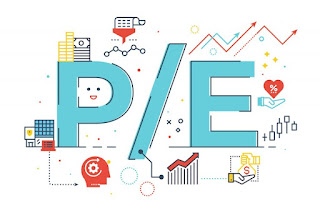Factors Affecting The Growth Of P/E Ratio
The P/E ratio is one of the most commonly used valuation metrics for
stocks. The multiple is determined by the market investors and is one
of the most widely used metrics to judge the quality of a stock. A high
P/E denotes that investors are willing to pay more for the company's
earnings and a low P/E indicates that the stock is undervalued.
A company's earnings are one of the principal determinants of its share value. Earnings act as a base for determination. A SEBI registered stock tips provider company can be the most trustworthy for your help determining the factors that affect the Price Efficiency Ratio.
The Following Factors Are:
· Growth In Earnings Potential
This is the most prevalent cause for a company's P/E ratio to rise. When an investor sees a company's profits potential expand, the company's perceived value rises.
· Improved Profit Margins
Increasing operational efficiency has the ability to lower a company's overall operating expenses, resulting in higher profits. The rise in a company's profitability as a result of operational improvements can also result in an increase in the P/E ratio.
· Lower Competition
If a major rival leaves the market, the remaining firms split the surviving competitor's market share. If the firm under consideration is well-positioned, it may benefit from an influx of new clients, resulting in greater revenue. This can eventually result in a rise in the company's valuation and a greater P/E ratio.
· A Viable Investment Opportunity
In rare situations, a single sector or industry may have a scarcity of investment prospects. In these circumstances, a firm with solid financials and fair development prospects may emerge as a feasible investment opportunity. This can boost the company's P/E ratio by increasing the perceived value of its shares.
· Safety Factor
Some sectors are deemed defensive and provide a safety net for the portfolio, protecting it from severe downturns. Even in difficult market conditions, FMCG and pharmaceutical items frequently have steady demand, which may function as a stimulant for the P/E ratio rise.
· Expansion Into A High-Margin Business
When a firm develops into a business with potentially high margins, another cause for a high P/E increase is when the company expands into a business with potentially high margins. This can boost the company's perceived worth among investors. Take the instance of Reliance Industries Limited, for example. From 2010 to 2016, the company's P/E ratio ranged from 12 to 17. However, when Reliance joined the telecom industry in September 2016, equipped with a well-thought-out strategy to combat the competition, its P/E ratio skyrocketed, putting it on a level with its main competitor Bharti Airtel, which had a P/E ratio of 40 at the time.
Conclusion
The stock market can be very difficult to decipher for even the most experienced investors. It is important for investors to understand the factors that can affect the growth of P/E ratios. If you need help with your investments, you should contact the stock future tips provider company for more information.




.jpg)
Comments
Post a Comment